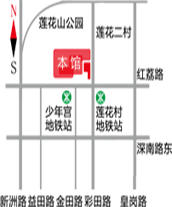
- Preface
-
Mr. Wu Haicheng is one of the teachers I sought knowledge from before entering the Academy of Fine Arts. As a highly respected middle school art teacher in my hometown of Shunde, Mr. Wu has dedicated nearly half a century to educating and nurturing numerous artistic talents in Shunde, many of whom have successfully entered art academies. His exemplary conduct, diligence, and rigorous teaching approach have earned him the profound respect and affection of his former students. Even within the art circle of Shunde, Mr. Wu enjoys excellent interpersonal relationships. The saying "Virtue is broad enough to carry all things" from the Book of Changes aptly describes Mr. Wu Haicheng's character and demeanor.
In the summer of 2007, I accompanied Mr. Haicheng and several other Shunde artists on a sketching trip to Mount Taihang in Henan Province. At that time, Mr. Wu had recently retired from his teaching position in middle school, and this trip marked his first visit to Mount Taihang. Over the course of nearly half a month, Mr. Wu traversed the towering cliffs of Mount Taihang alongside us, seeking the landscapes and brushwork symbols that resonated with him. Since then, Mount Taihang has become Mr. Haicheng's base for landscape sketching, and he has made several return trips in recent years, producing countless sketches of the majestic mountainscapes. Despite the physical rigors of travel, Mr. Haicheng, approaching his seventies, remains avidly passionate about this pursuit. From 2007 to 2016, he traversed the Taihang Mountains in Henan and Shanxi, as well as mountainous regions in Guangxi, Zhejiang, Hubei, Guizhou, and, of course, captured numerous landscapes from the picturesque lakes and mountains around Lingnan and its vicinity. Mr. Haicheng is embodying the "artistic dreams" he once entrusted to his students.
Although Mr. Haicheng's journey in landscape painting did not involve formal academic training, his perseverance and intuition have guided him into a relatively "orthodox" path of self-study, allowing him to delve into and comprehend the traditional lineage of landscape painting. The brushwork and inking techniques, as well as the processes of outlining, stippling, and shading demonstrated in his landscapes, adhere to the fundamental conventions of landscape painting from the Song, Yuan, Ming, and Qing dynasties. Moreover, his paintings reveal traces of his research into the techniques and styles of modern masters such as Li Keran, Lu Yannao, and the New Jinling School of painting. Even the recent sketches of Mr. Haicheng bear the influence of Professor Hao Hejun, my university teacher from the Guangzhou Academy of Fine Arts, in his landscape painting. These nuanced technical elements from various schools and styles have laid a solid foundation for the second stage of Mr. Haicheng's artistic journey: sketching.
If Mr. Wu's early travels across China ignited his love for vast mountains and waters, then his numerous sketching trips to the north since 2007 undoubtedly solidified his artistic style and tone in middle age, gradually evolving into a simple, profound, down-to-earth, and natural aesthetic in his landscapes. This is particularly evident in his depictions of the rugged, square-shaped rock formations of Mount Taihang in Henan and Shanxi, where his heavy and intricate brushwork, combined with layered stippling and inking, create a sense of simplicity and grandeur in his paintings. In his sketches, Mr. Haicheng favors a serene and balanced composition, eschewing gimmicks or extreme perspectives. Natural landscapes such as mountains, grotesque rocks, secluded forests, farms, and valleys are all favorite subjects of his brush. The authentic forms and compositions, along with the organic integration of various elements, endow his sketches with a sense of "habitability and wanderlust."
Furthermore, as the years pass and his sketching experiences accumulate, Mr. Haicheng's landscape paintings increasingly adhere to the essence of Chinese painting: "shaping with lines and using bone-like brushwork." Observing his recent sketches, one can see a tapestry of interwoven lines and dots, where the application of brush and ink has become effortless. In particular, his sketches of the rocky cliffs of Mount Taihang showcase rugged yet vivid lines that harmoniously combine the texture of the cliffs with the expressive power of brush and ink. There are many other delightful aspects in Mr. Haicheng's paintings, such as the meticulously rendered figures, animals, and utensils, which add a touch of liveliness. The inscriptions on his paintings also reveal his proficiency in calligraphy and literary accomplishments. As a Chinese painter, the importance of calligraphic proficiency cannot be overstated. Apart from his landscape paintings, Teacher Haicheng excels in calligraphy, proficient in both official script and regular script. The mastery of calligraphy has brought indescribable richness to his painting techniques.
"Seventy years of life are rare since ancient times." For many Chinese painters who value ink and brushwork, the age around seventy marks a turning point in their artistry, when their brushwork matures and becomes effortless – a universal truth among the late bloomers in modern and contemporary Chinese painting history. I suspect that Teacher Haicheng does not set his goals too high, but isn't the philosophy of "delighting in the ways of mountains and waters" precisely a portrayal of his being able to "act according to his own will without overstepping the bounds" at seventy? Teacher Wu Haicheng is advancing towards the realm of "acting according to one's heart's desire" on the artistic path of landscape painting.
Guo Ziliang
June, 2016
In Jinling



